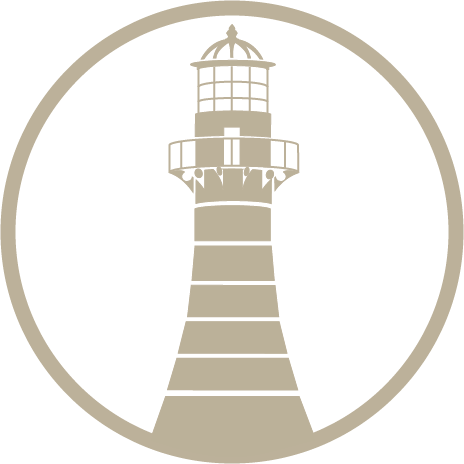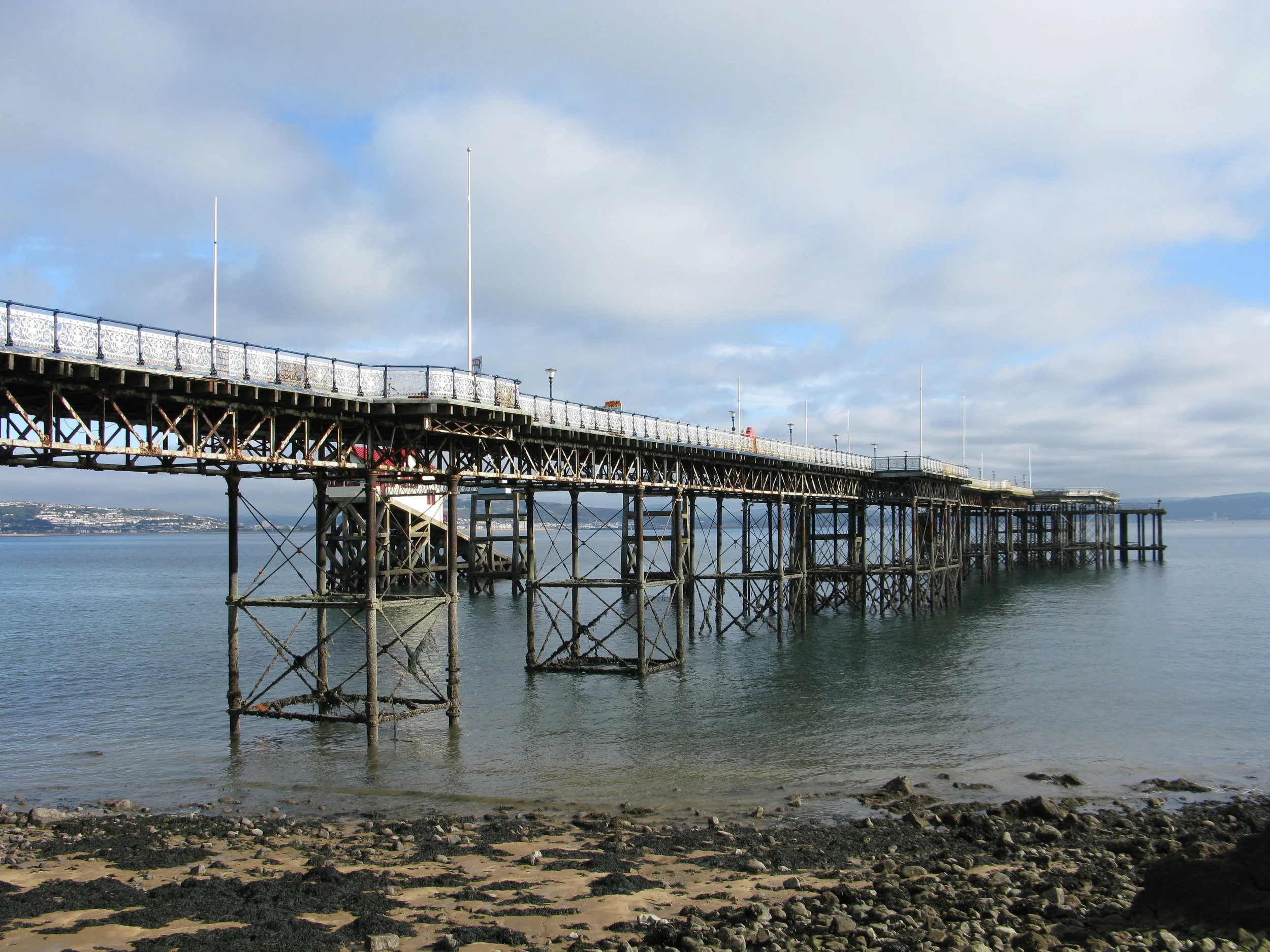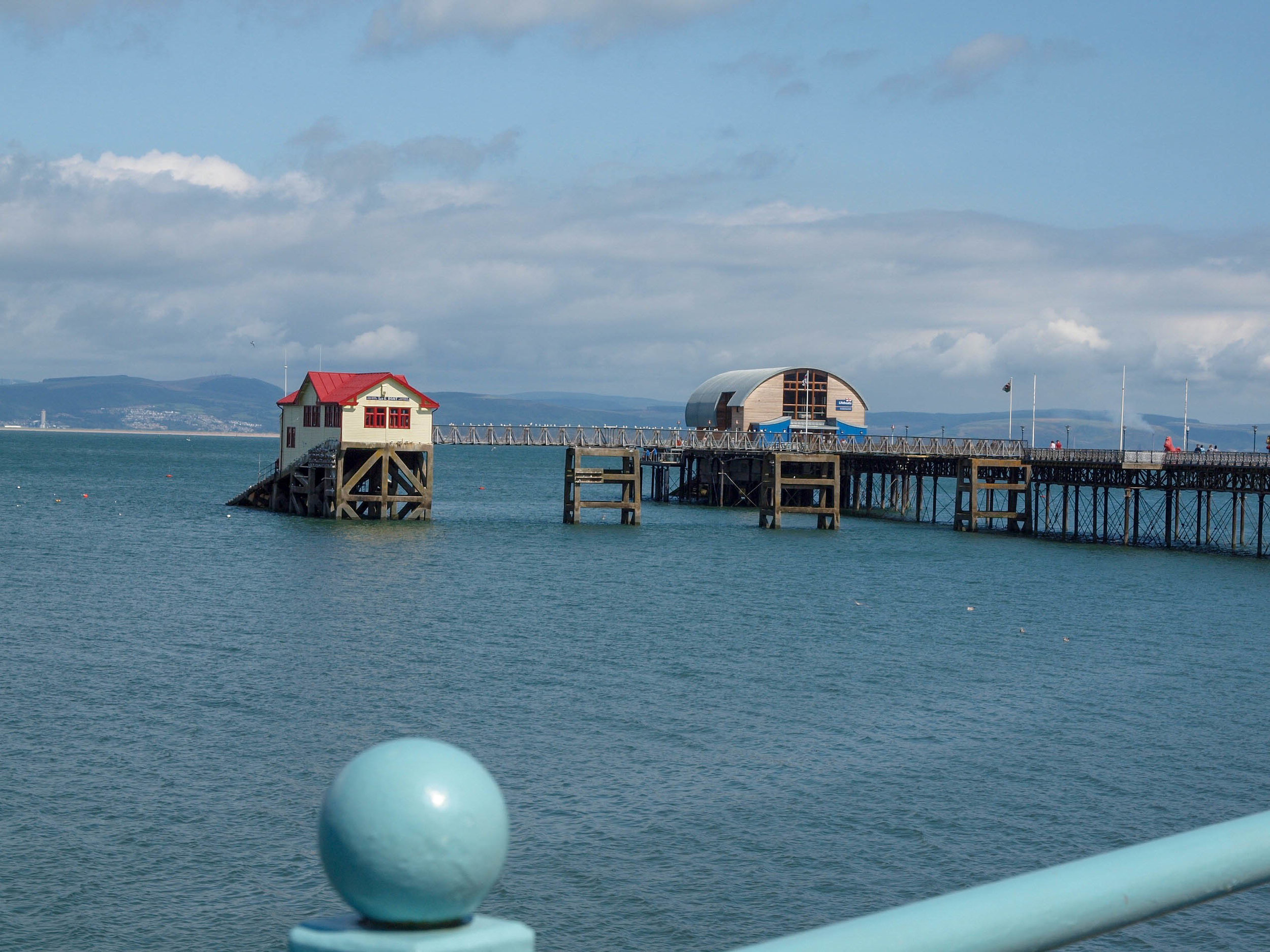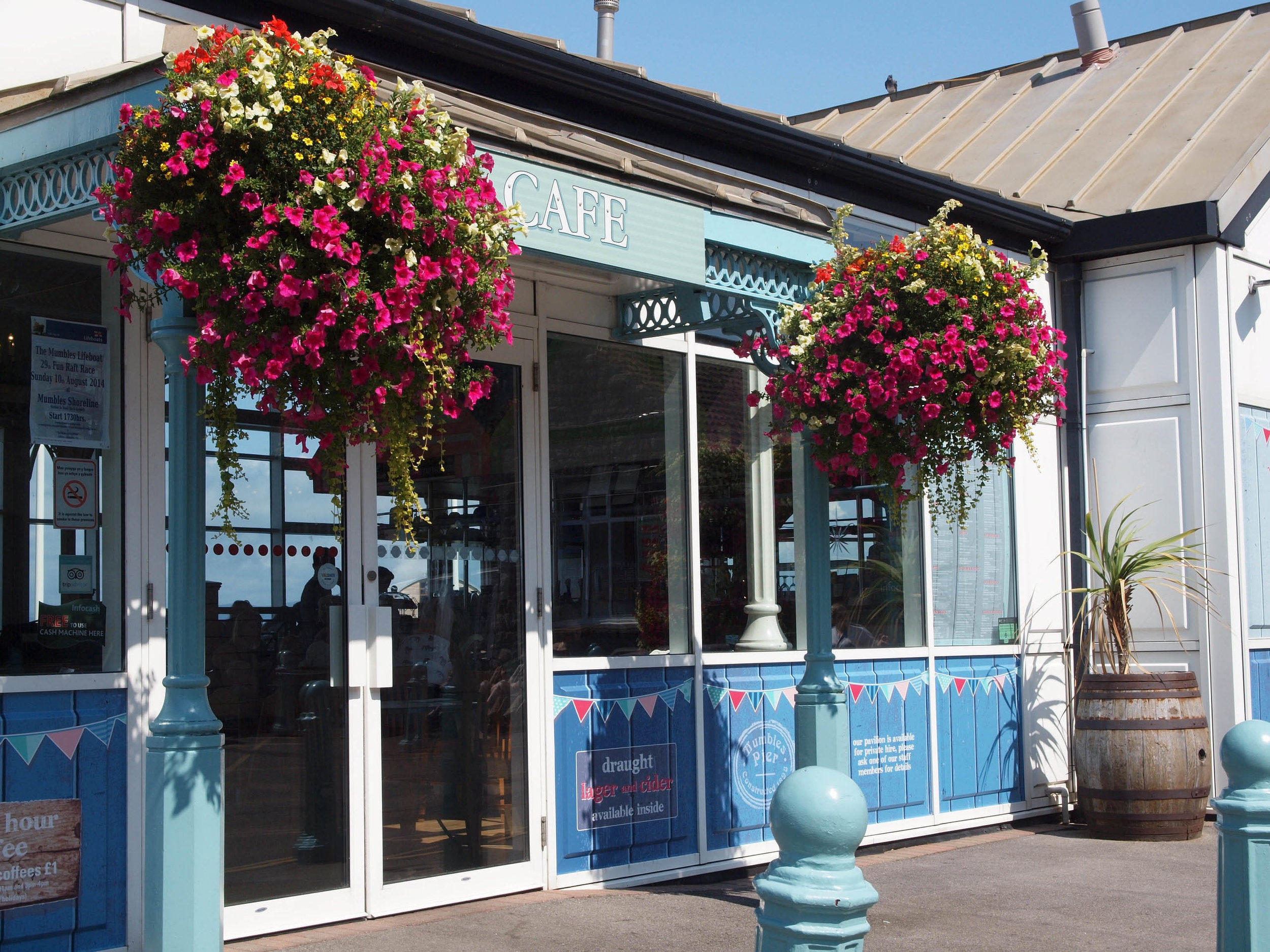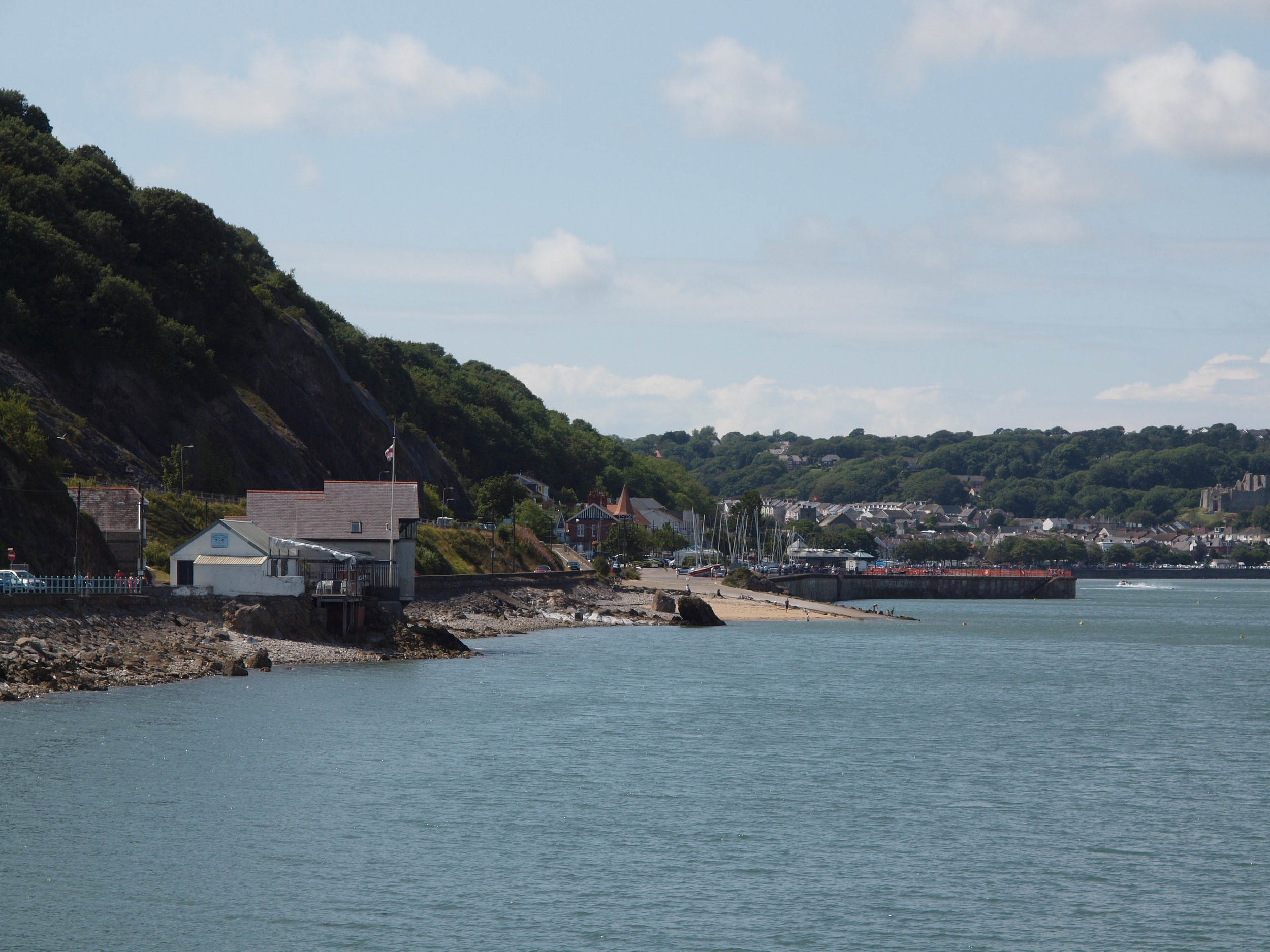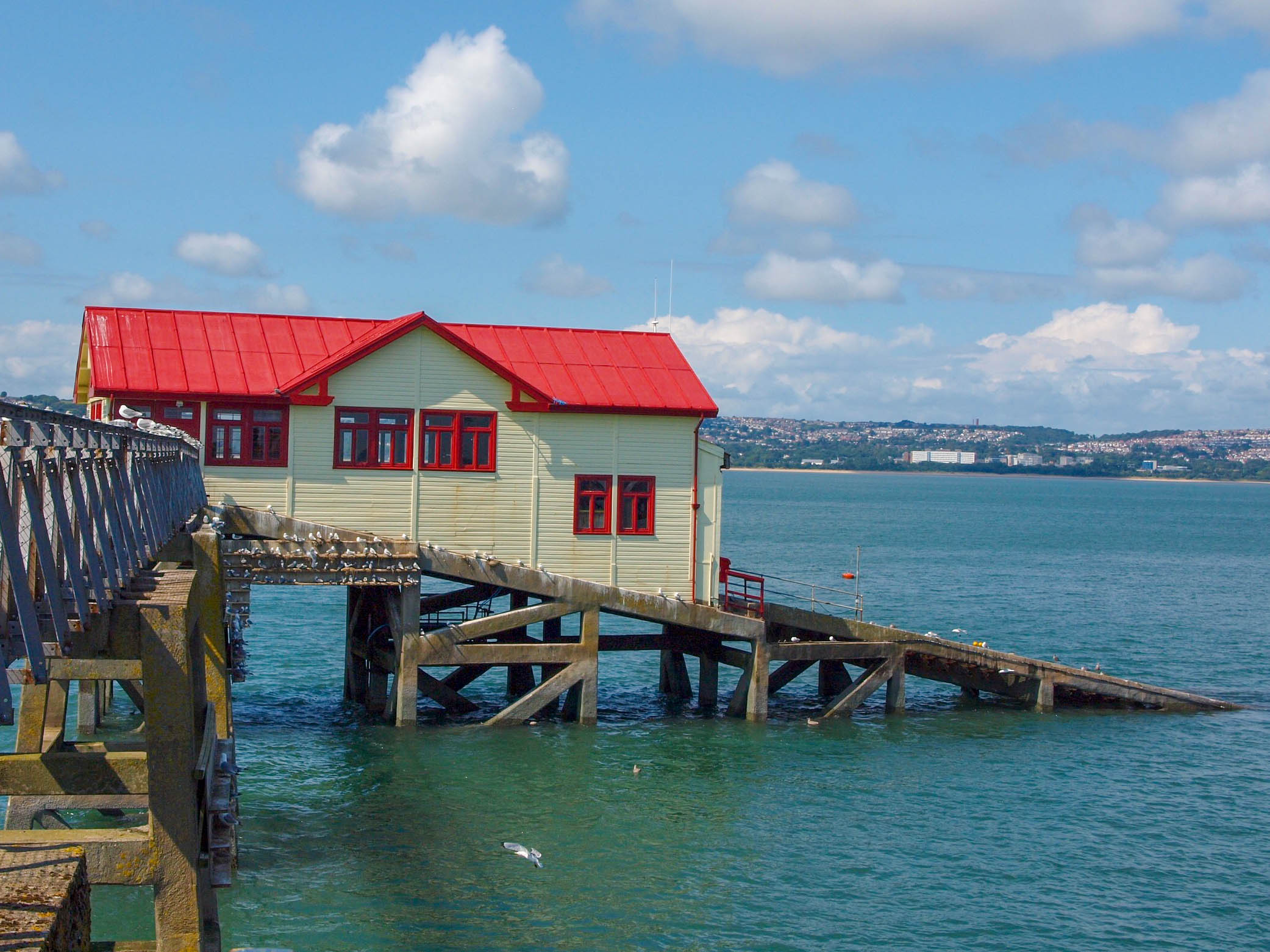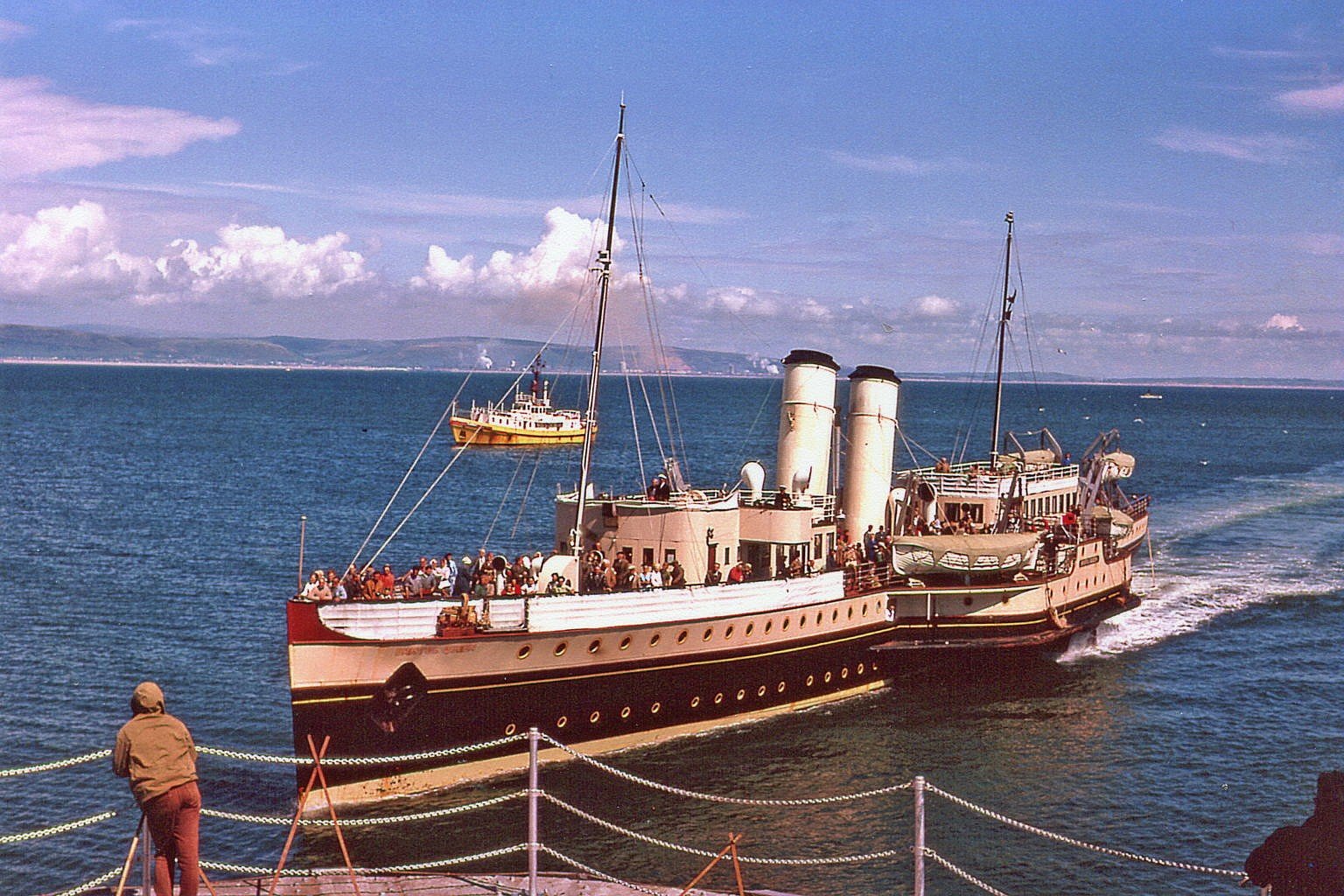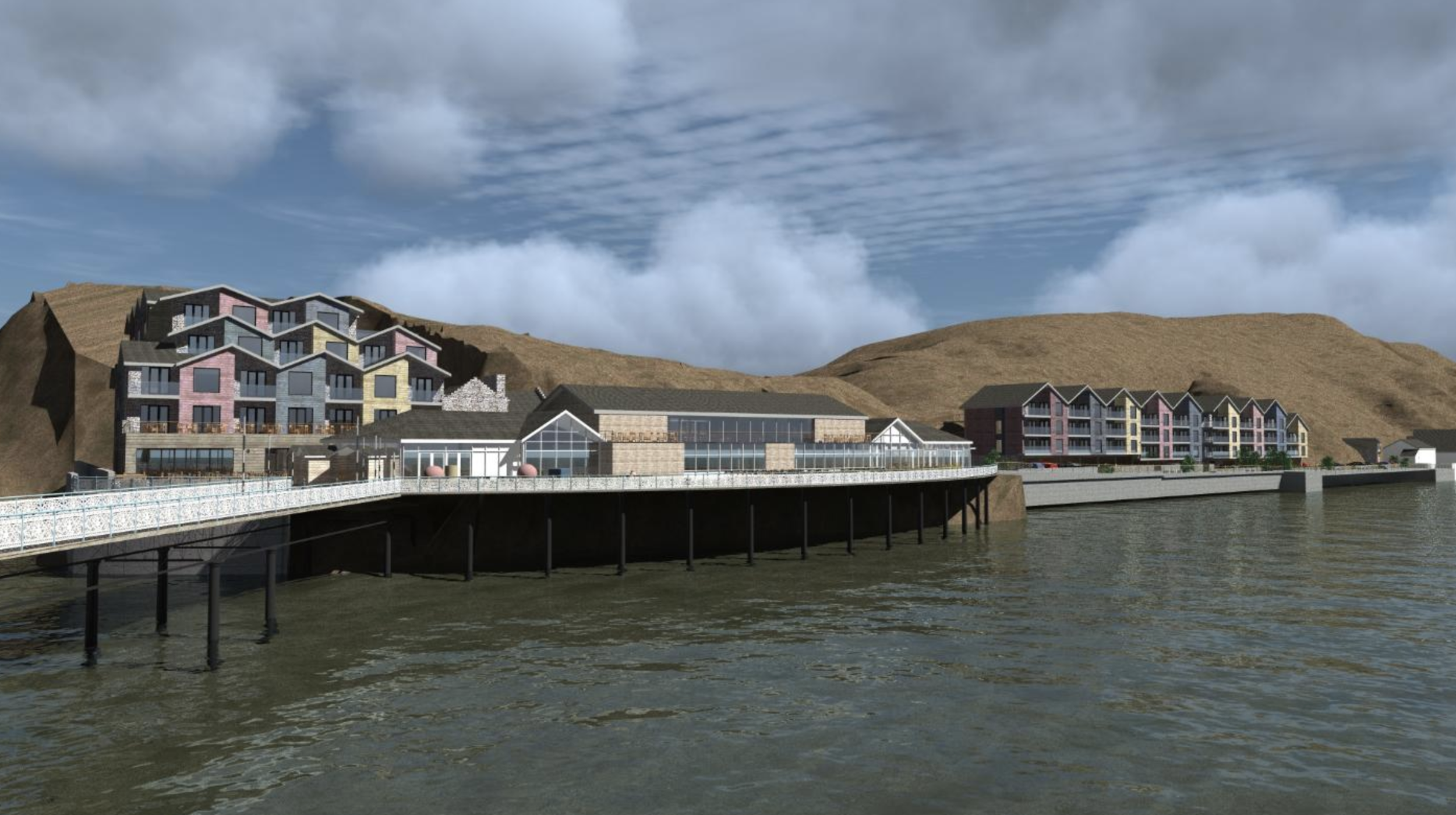Mumbles Pier
Mumbles Pier & Lifeboat Station
The Mumbles Pier was opened on the 10th May 1898 and included a Pier Terminus for the famous Mumbles Train. Today, the Pier It is a family run business and is one of very few privately owned piers left in Britain. The Pier complex includes, a cafe, restaurant, amusement arcade, gallery, souvenir shop and fishing tackle shop.
This is one of the few remaining iron piers in Wales and is Grade II listed. The Pier is 835ft long and is home to the new Mumbles Lifeboat Station. Half way along the pier there is a bridge to the red roofed original Lifeboat Station, but this is no longer in use. The pier is currently half way through a multi-million pound renovation scheme.
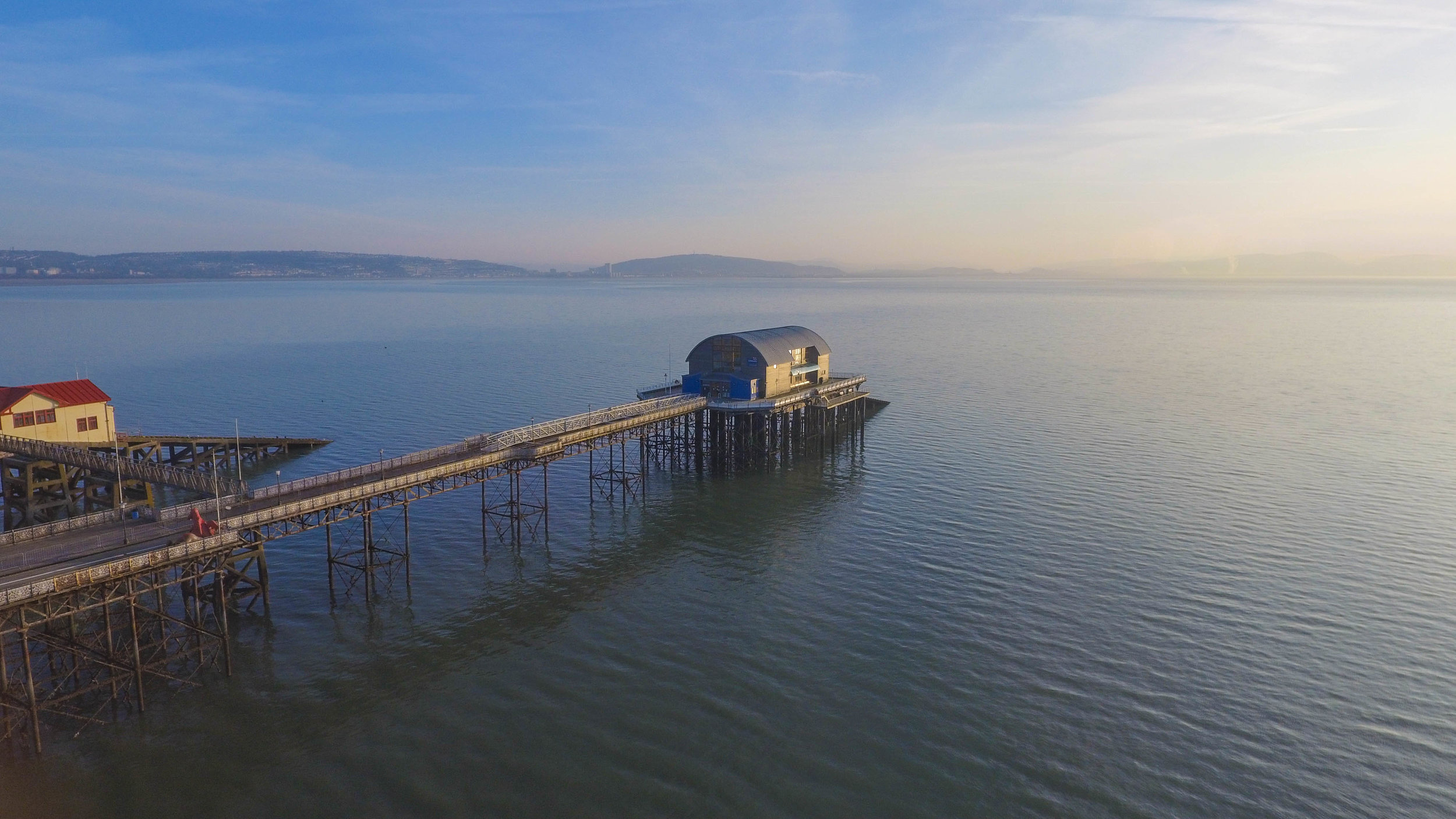
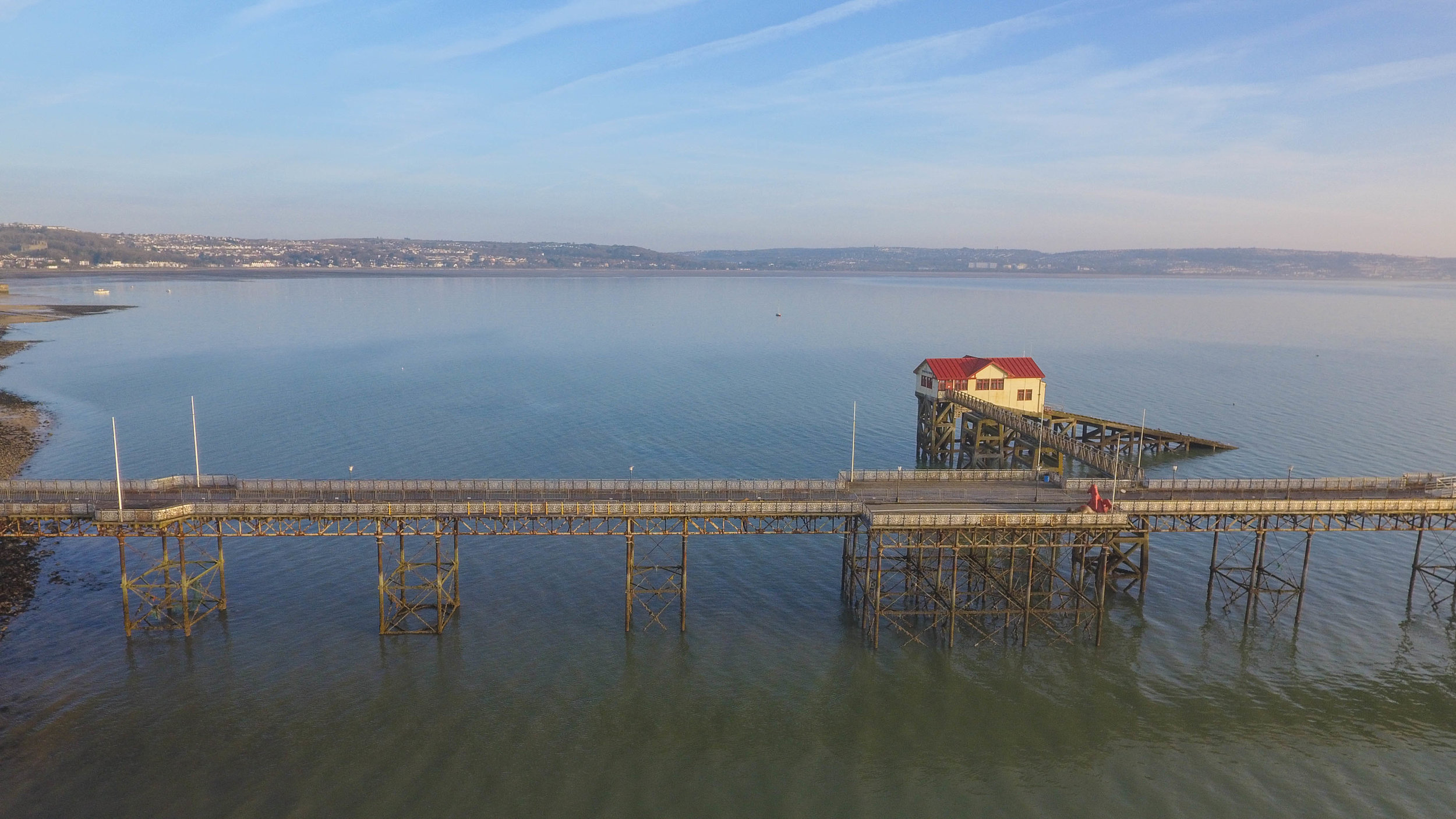
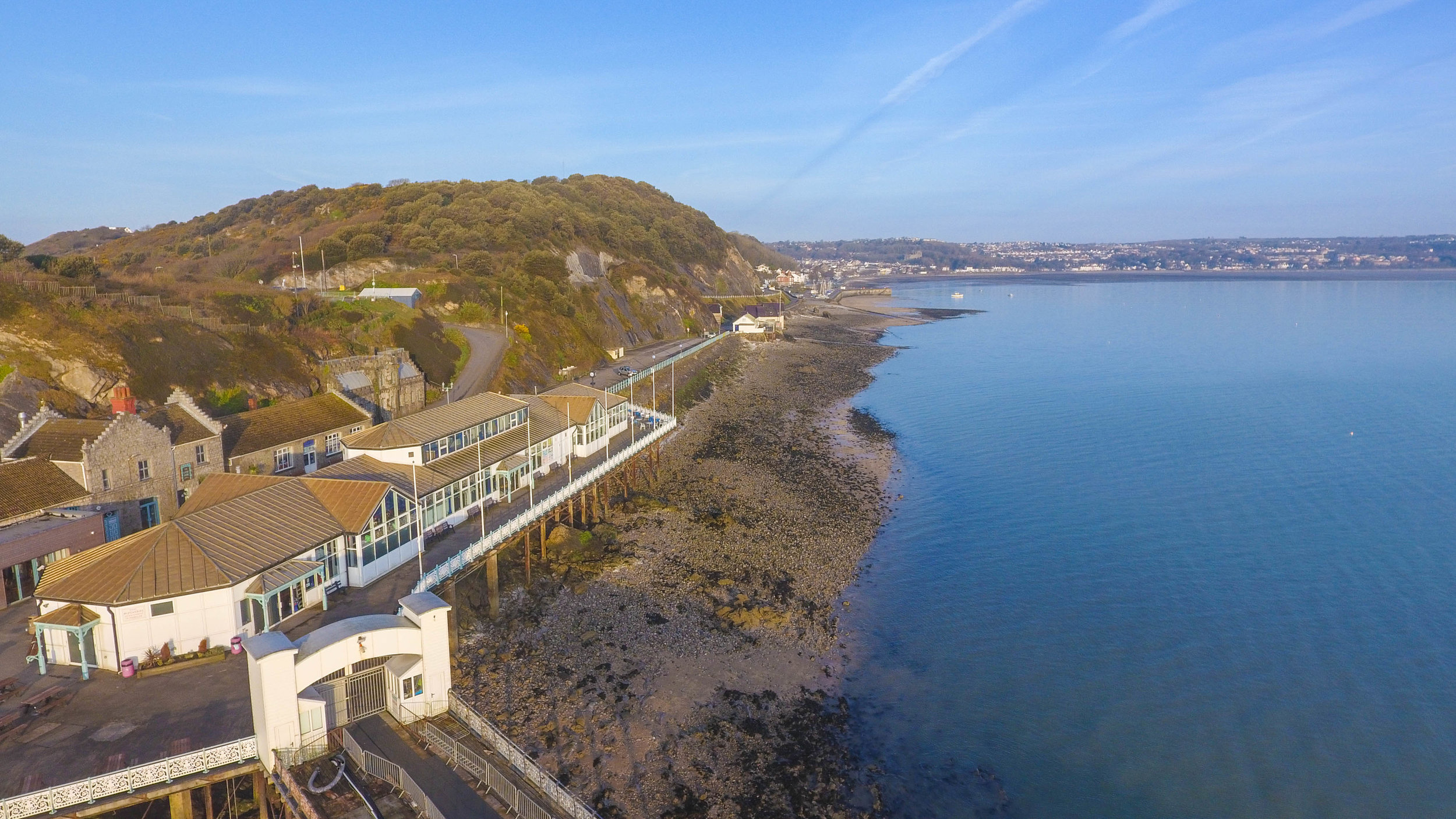
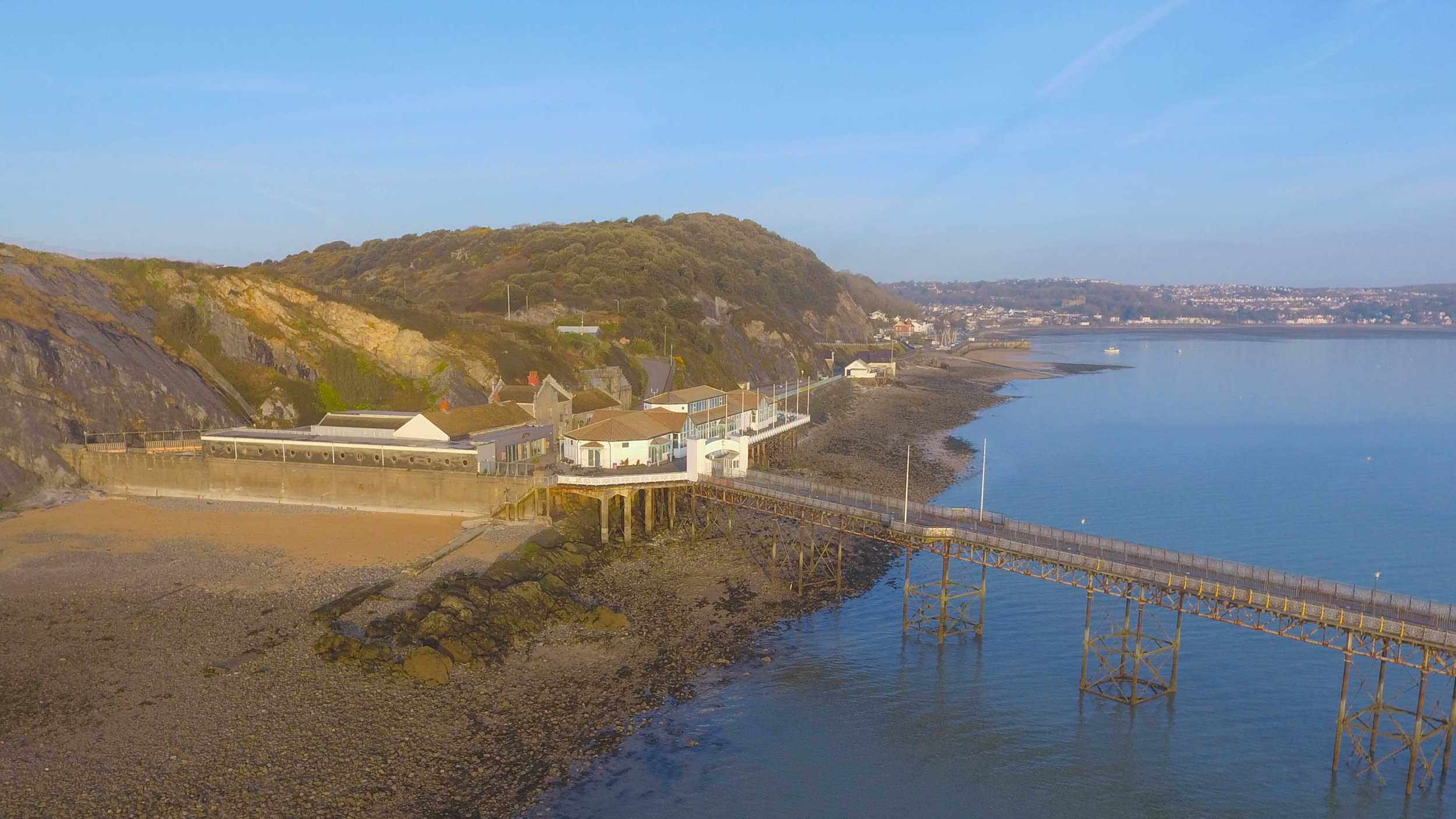

Access to the Pier is Free. There is local parking that is chargeable, but the there is refund scheme when you use the cafe and restaurant. There is also small Public Pay & Display car park immediately above the Pier and adjacent to this, the much larger Bracelet Bay carpark, again this is PAY & Display. It is a 5 minute walk from Bracelet Bay to the Pier. Alternatively, those wanting a stroll will often park at Knab Rock or even the village of Mumbles and then walk out to the pier.
According to the Mumbles Railway's 1904 Centenary souvenir book, "The Pier has become, without a doubt, the most popular resort in the locality."P and A Campbell's White Funnel paddle steamers, such as the 'Brighton,' would call to take passengers across to Ilfracombe and other ports along the River Severn and Bristol Channel. The 835-foot pier, designed by W.Sutcliffe Marsh, opened on May 10, 1898. It had cost £10,000 to build.
Black and white postcard, view of Mumbles Pier, 1920. Message written on reverse. Red one penny stamp postmarked Mumbles 11 August 1920.
The Swansea and Mumbles Railway, promoted by John Jones Jenkins of the Rhondda and Swansea Bay Railway, terminated here. Amusement Equipment Co. Ltd (AMECO) obtained a licence to operate the pier on October 1, 1937, and later leased it. In 1957, they purchased the freehold. The pier was sectioned in 1940 and extensively reconstructed in the 1950s, with the addition of a landing jetty. It reopened to the public on June 9, 1956. In 1966, a new amusement arcade was built on the pier's frontage.
Mumbles Pier 1950s
On July 13, 1958, the Bristol Queen, Cardiff Queen, and Glen Usk offered a variety of Bristol Channel trips from Swansea, Mumbles, Ilfracombe, Porthcawl, Barry, Cardiff, Penarth, Weston, Clevedon, and Bristol.
Bristol Queen 1958 - Credit www.paddlesteamers.org
Cardiff Queen was scheduled to make two round trips across the Bristol Channel, one between Swansea/Mumbles and Ilfracombe and one between Swansea/Mumbles and Porthcawl in the afternoon. She was scheduled to leave Mumbles at 10 a.m. for Ilfracombe (12 noon) for Swansea (2pm), Mumbles (2.20pm), and Porthcawl (3.25pm), then return to Mumbles (4.40pm), Porthcawl (5.50pm), Ilfracombe (7.35pm), with a train connection back to Swansea (9.30pm).
A Gower Cruises on the MV Balmoral
Between 1975 and 1985, AMECO spent between £25,000 and £30,000 per year on steelwork maintenance and replacement. The pier was closed on October 1, 1987, but reopened on Good Friday 1988, after £40,000 was spent over the winter on renewing steelwork near the entrance. In 1998, a new pavilion was built on the landward end, which includes a bar, restaurant, bowling alley, cafe, nightclub, and amusement arcade.
Cinderellas Nightclub
An access bridge connected to an RNLI Lifeboat station on the pier's northern side. The RNLI operated on a licence basis from the pier and had a long history with Mumbles and the pier dating back to 1866. However, it was realised that when the next generation of lifeboats entered service in Mumbles in 3 to 4 years, the current facility would no longer be suitable – the new boat would not fit into the existing building and would not be capable of being launched at low tide from the current location. The intention of the RNLI was thus to build a new lifeboat station to replace the existing facility, and the renovation of the Pier was deemed necessary to ensure the long-term presence.
However, as the new century began, significant flaws in the lattice steelwork and hand railings became apparent, and some of the side rails and seating areas began to rust. A large section of the decking at the pier's far end had to be removed. The restoration work required the replacement of steel and timber elements from the piles upwards and was estimated to cost more than £3 million. The pier was not generating enough funds to cover the necessary work, and as a privately owned pier, it was ineligible for most public grants.
The majority of the funding was thus proposed to come from AMECO's ambitious plans to demolish the Pier Hotel and embark on a £39 million development project that would include a new hotel, apartments, boardwalks, and a family entertainment centre. Grants from the RNLI and the Welsh Assembly were also expected to help. Swansea Council formally approved a Development Framework document to support the project. The revitalisation of the pier, as well as the redevelopment of the former nightclub building and part of the coastal approach to the pier, was a major theme of this document. The pier's restoration and redevelopment were also included in the Swansea Bay Strategy Action Plan in 2007.
Following concerns that the pier might have to close, the owners announced in March 2011 that they would keep it open for another 6 months but that this would deplete their emergency funds. Swansea Council then approved plans for the pier restoration, as well as the construction of a new RNLI lifeboat station, in April 2011. The proposal for apartments and a hotel to finance the restoration project was then supported by Swansea councillors in June 2011, and the Welsh Assembly Government stated in July 2011 that they would not object to the entire scheme. The preliminary work was then completed and in June 2012 construction of the new Mumbles lifeboat station began.
The pier is currently undergoing extensive restoration work, with phase one of the work completed. The historic landmark has been a tourist and local attraction for over a century, having been a part of Swansea since 1898.
Proposed New Developments: Mumbles Pier Project
For the last three generations, the Bollom family has owned Mumbles Pier. They began looking into ways to fund its restoration in 2006. Obtaining public grant aid proved impractical, so the owners opted for a long-term reconstruction solution. They devised the novel idea of using the proceeds of high-quality foreshore development, including vacation rentals, to fund a restoration project (at no cost to the public purse). The rebuilt pier will incorporate period details while also utilising new low-maintenance materials and modern construction techniques.
In November 2018, the foreshore development, including the headland, received final planning approval. The revised scheme, which included apartments and a hotel complex, also included extended frontage areas for improved public access.
